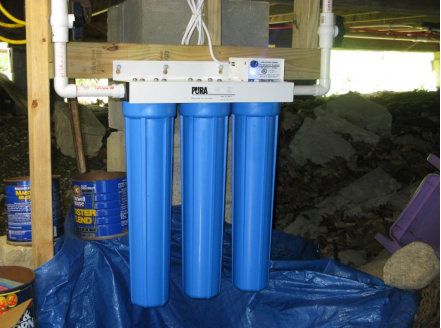Quote:
Originally Posted by rgilfert

LIforrelaxin, I can't fight your logic regarding a whole house unit being overkill....and to be honest I thought about just doing the kitchen faucet....but I was afraid that
someone might get sick from drinking from the bathroom faucets so I opted for covering the whole house. I justified the incremental expense of a larger unit with peace of mind.
|
While Lake Winnipesaukee's water isn't the quality it was in the 1960s, One would think that waterskiers and tubers would get snootfulls of lakewater sufficient to cause illness today. Yet that doesn't seem to be the case.

At Lake Winnipesaukee, I've changed from
distillers to simply boiling my personal drinking water. The rest of the family drags in Town water, who sends annual mailings advising of Town water's harmful chemicals.

Boiling lake water early in the morning adds moisture and warmth to the interior and that water has stored with no difficulties throughout the warm months—and through the winter. A real test came when I suffered a "skin-tear", and rinsed that injury with that cooled and sterile product. Town water can't avoid forming
trihalomethanes, which can't be good for contact with open wounds—especially a wound as extensive as a skin-tear.
Speaking of steam, this is a cute
Plow and Hearth item to put on your woodstove during the off-season. Steam exits through the nose!


As for filters, the boiled water is run through coffee filters into "Sun-Tea" containers stored above sinks. One of those plastic "gold" filters can support a paper coffee filter. One would think a coffee filter would be too coarse for filtering; however, flowing only three gallons of "clear" lake water will clog one coffee filter! (Although the filtrate is invisible, it's most likely suspended vegetative filaments).
This is an
in-series filtering system, probably necessary for the installation.

At a different lake, I devised the following
parallel filter system, which has three sediment filters. Each operates independently of the others, allowing a continuous maximum flow. When the right filter leaked, I simply shut that one unit off using its self-contained lever.
The intake draws from the middle of a large field of aquatic vegetation of lily pads and reeds, which is supposedly a very clean environment. It's been operating for years, but no need to use the reverse-flush feature has appeared.